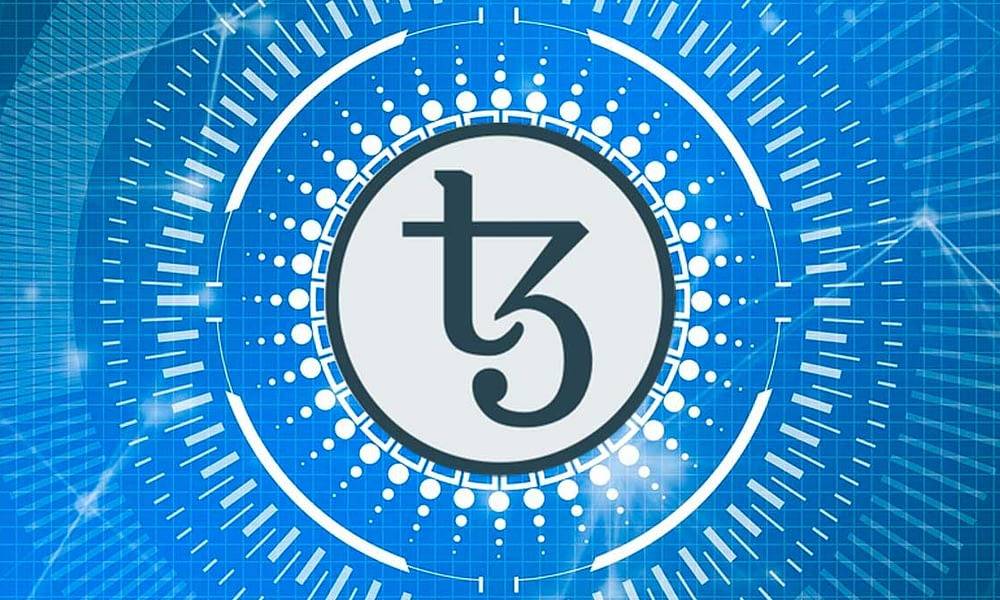Issues regarding the environmental effects of cryptocurrencies are bought up quite frequently. Bitcoin, the most popular cryptocurrency, has drawn criticism for its intensive energy usage and its carbon footprint. For context, one bitcoin transaction leaves a footprint equal to watching a 100,000 hour duration YouTube video. But this isn’t a problem limited to just bitcoin.
As concerns regarding the environmental impact of cryptocurrencies rise, investors are naturally shifting to sustainable cryptocurrencies to add to their portfolios. In this guide, we’ll explore over a dozen such cryptocurrencies along with the need for, and the benefits of using sustainable cryptocurrencies.
The Most Sustainable Cryptocurrencies To Invest in 2024
The cryptocurrency industry has introduced an entirely new spectrum of emissions and it’s important, as a responsible investor, to invest in coins that are both functional and sustainable. To make your job easier, we’ve compiled a list of the best sustainable cryptocurrencies and it goes as follows:
- Ripple (XRP): Carbon Neutral Sustainable Blockchain
- TRON (TRX): Developer Friendly Alternative
- IOTA (MIOTA): Most Stable Sustainable Cryptocurrency
- Stellar (XLM): Potential Bitcoin Competitor
- Tezos (XTZ): Open Source Blockchain
- Hedera Hashgraph (HBAR): Blockchain With Ever-Increasing Efficiency
- Algorand (ALGO): Blockchain Fostering A Carbon Neutral Network
- NEAR Protocol (NEAR): Remarkable Green Initiatives
- Powerledger (POWR): Most Notable Sustainable Crypto Project
- Signum (SIGNA): Only Crypto To Use Proof of Commitment
Reviewing the Most Sustainable Cryptos
Here’s a closer look at the most sustainable cryptocurrencies you should consider adding to your portfolio:
Ripple (XRP): Carbon Neutral Sustainable Blockchain
Based in San Francisco, Ripple aims to provide banking services worldwide by providing financial institutions with an alternative currency, XRP. The company describes itself as an “open-source, permissionless and decentralized blockchain technology that can settle transactions in three to five seconds.”

The incentive underlying Ripple has always been its speed. While major cryptocurrencies like bitcoin can take hours to complete a transaction, XRP is known to settle transactions in seconds. This is possible because XRP does not utilize a Proof of Work algorithm that consumes major energy to keep the network operational.
Ripple calls itself the first major blockchain to be carbon neutral, enabling sustainable crypto solutions and powering dynamic markets. The co-founders of the network are active members of the Crypto Climate Accord and WEF’s Crypto Impact and Sustainability Initiative. According to its website, Ripple is committed to becoming carbon net-zero by 2030 by managing emissions and making large investments in carbon removal projects.
Your capital is at risk
TRON (TRX): Developer Friendly Alternative
TRON is a non-profit organization based in Singapore, known to support almost every programming language in the world. The platform enables creators to share applications directly on the blockchain which makes it more energy efficient. The project plans to decentralize the web, with TRONIX, the native token of the blockchain powering the network.
TRON operates on a two-tier model of Super Representatives and Super Representative Partners, where every account is eligible to become an SR with votes from the Super Representative Partners.
Additionally, the native currency of the network, Tronix, is pre-minted and can be traded on multiple exchanges, including Binance. Pre-minting is a process where a portion of the coin is created and distributed before the launch, making it more efficient in terms of energy usage as it doesn’t have to rely constantly on mining operations.
Your capital is at risk
IOTA (MIOTA): Most Stable Sustainable Cryptocurrency
Unlike what’s expected from most cryptocurrencies, IOTA hasn’t been financially much lucrative for investors. But it’s a good fit looking for sustainable crypto to invest in. While not immensely profitable, IOTA remains among the most sustainable cryptos in the market.
Source: Invest In Blockchain
IOTA works on Fast Probabilistic Consensus, which is partially based on partially on Proof of Work. Minimizing the entire energy consumption of the network. To put it in context, IOTA uses much less energy than most other financial networks such as VISA and Mastercard.
Over the years, the network has received multiple updates that help reduce its energy consumption. Just last year, for example, the Chrysalis upgrade helped the network reduce its energy usage by up to 95%, putting the energy requirement a little over a millionth of a kWh per transaction.
Your capital is at risk
Stellar (XLM): Potential Bitcoin Competitor
Often considered to be a potential alternative to PayPal, the Stellar Network acts as a bridge between traditional financial institutions and digital currencies. It does that by not charging individuals for using the network, enabling cost-effective asset transactions across borders.

The network has invited funding and recognition from many notable companies such as Stripe, BlackRock, Google and FastForward, and IBM and Deloitte respectively.
The Stellar network, by design, is sustainable and efficient, made possible with the Stellar Consensus Protocol (SCP)- a low-energy consensus mechanism enabled by the Proof of Agreement (PoA) mechanism. The network provides an assessment framework to provide a holistic view of the electrical consumption and greenhouse gas emission by use of the protocol.
The network is often suggested to be a better alternative to Bitcoin.
Your capital is at risk
Tezos (XTZ): Open Source Blockchain
Tezos makes use of the Proof of Stake (PoS) mechanism, allowing the network to improve without the need for a hard fork. Since it’s open source, anyone can contribute to help the blockchain improve. This creates a highly innovative environment for the network to exist while using only a fraction of the energy that most Proof-of-Work-based cryptocurrencies use.

The Tezos network has a very low carbon footprint, reducing progressively as the network becomes more energy efficient year on year. For context, the energy requirement per transaction in 2021 was 30% less than a year prior.
Interestingly, the Tezos network has expanded to multiple use cases including NFTs and DeFi and has garnered much attention from the mainstream. Although the on-chain activity has increased, the energy consumption has only proportionally decreased. Naturally, Tezos comes out to be one of the best cryptos when it comes to sustainability.
Your capital is at risk
Hedera Hashgraph (HBAR): Blockchain With Ever Increasing Efficiency
Hedera Hashgraph has been progressively growing in popularity over the years and also managed to surpass ethereum in the number of transactions last year. The blockchain works on a mechanism, known to interact through “gossip”, wherein the nodes on the network talk with each other and the ones deemed famous are verified across the network.
The HBAR foundation, behind the Hedera network, launched a $100 million fund this year for sustainable ventures. The fund plans to invest in Hedera-based solutions involving carbon emissions and removals.
The chain in itself is quite noteworthy, as it’s not as much made of blocks as it shares a resemblance to a graph. Meaning, that over time, as the number of transactions increases, the speed at which these transactions get verified on the network also increases. Improving the efficiency altogether. This one aspect helps the cryptocurrency stand apart from every other one in the market. If you’re looking for sustainable coins to invest in, HBAR should very likely be on the top. The coin is available to trade on Binance.
Your capital is at risk
Algorand (ALGO): Blockchain Fostering A Carbon Neutral Network
Launched in 2019, Algorand is a relatively new blockchain that managed to quickly scale and reach a daily transaction record of one million transactions by the end of December 2020.
The blockchain doesn’t rely on mining and is trying to make sustainable efforts by employing something called a carbon-neutral network. Through this, Algorand can offset any emission gaps and consequently reduce the environmental impact caused otherwise.
Source: VentureBeat
As the founder says, “I care about the planet” and the algorithm employed by the network will drive electricity consumption to almost zero.
The cryptocurrency also has a lot of scope on the investing front since it supports smart contracts and can be one of Ethereum’s main rivals. The coin is currently trading at $0.3 with a market cap of over 2 billion dollars.
Your capital is at risk
NEAR Protocol (NEAR): Remarkable Green Initiatives
Launched in 2020, the NEAR protocol is a third-generation blockchain based on Proof of Stake, and comparatively much better than PoW chains, processing more than 1,000 transactions per second. That isn’t where it stops though. With further sharding- a technology that divides computation into shards – the blockchain will be much more efficient than it is now.
NEAR is a carbon-neutral blockchain, hosting various apps, games and also NFTs. Along with being highly efficient, the network also rewards its users and developers with 30% of transaction fees. So by using the network, you’re helping offset the environment without having to do anything extra.
The protocol was certified carbon neutral in 2021 by the South Pole, a low-carbon project developer and climate solutions provider. NEAR received the certification after they provided documented and verifiable carbon emissions associated with the network, along with undertaking tree planting initiatives. The company also helped NEAR reduce its carbon footprint wherever possible and compensate for the rest with CO2 offsetting programs.
Your capital is at risk
Powerledger (POWR): Most Notable Sustainable Crypto Project
Founded in 2016, Powerledger raised around $26 million in 2017 during its initial coin offering. The platform presented itself as a modern, market-driven grid. Offering consumers a practical choice in the environmental responsibility of the power they can use.
The Powerledger platform enables peer-to-peer energy trading while acting as an operating system that tracks the trading of energy and a bunch of other commodities. It gives the power to track, trace and trade energy in real-time to the producers, who otherwise were dependent on a centralized power grid- often found to be unreliable.
POWR was initially an Ethereum-based token and later shifted to being a customized Solana-based blockchain. And Solana’s scalability was the primary motivator for this decision. Notably, Powerledger is one of the few blockchains with a female co-founder. Doctor Jema Green leads a team of several other women as an Executive Chairman.
Your capital is at risk
Signum (SIGNA): Only Crypto To Use Proof of Commitment
Among all the cryptos mentioned so far, Signum is arguably one of the most interesting cryptocurrencies when it comes to consensus mechanisms. Signum uses Proof of Capacity and not Proof of Work or Proof of Stake. Furthermore, it updated to Proof of Commitment while simultaneously introducing Smart Tokens.
Signum regarded users for carrying out mining operations using the already present storage space on their computers, which would barely require any more energy than an inactive computer. This way, the network was much more efficient than the traditional Proof of Work. Interestingly, miners can also use old mobile phones to mine SIGNA, making mining more accessible.
Later, in 2021, Signum introduced the Proof of Commitment consensus, where miners were able to increase their effective storage capacity by committing the SIGNA balance in their holdings. This mechanism significantly improved a miner’s chance of earnings without needing more hardware.
The network is led by volunteers who founded a non-profit organization in 2021 to fulfill the sustainable vision of the blockchain.
What Are Sustainable Cryptocurrencies?
Sustainable cryptocurrencies are those cryptocurrencies or crypto projects that do little to no harm to the environment or try to mitigate the ill effects their current operations are causing. Naturally, there are two ways they deal with it.
Firstly, the energy consumption of the blockchains that host these cryptocurrencies is made efficient. For context, Bitcoin uses a Proof of Work consensus mechanism that demands intensive energy usage to validate transactions. The annual energy consumption of the network is around 198 TWh, comparably much higher than a few countries, emitting more than 95 million tonnes of CO2 in the environment.
Comparatively, Ethereum, the second biggest cryptocurrency blockchain now utilizes a Proof of Stake consensus mechanism since the ETH merge that allows for validating transactions without consumption of much energy, as there are no networks of computers solving complex problems, unlike BTC. BNB, Cardano and Polkadot are a few other cryptocurrencies that make use of the same mechanism.
At their most fundamental level of operation, these cryptocurrencies are environmentally efficient, if not harmless, and make a case for wider adoption of cryptocurrencies without having to worry about their negative impacts on the environment.
Various blockchains have also undertaken environmental initiatives to mitigate the effects of their network on the environment. Nano, an open source blockchain, with their foundation and the community organized a tree planting campaign that focused on a green and inclusive future.
Emerging cryptocurrencies are also integrating pre-mining, where an authority creates a certain amount of crypto coins, similar to the shares issued by a company. This mechanism isn’t all that effective altogether but manages to reduce the impact caused otherwise.
Incentives Revolving Sustainable Cryptocurrencies
Since their advent, cryptocurrencies have been cited to be revolutionary and while that may be true, it’s important that they stay in terms with the environment, if they plan to become mainstream one day. Changing the way we understand finance.
Cryptocurrencies that regard themselves as “green” may not be able to completely eliminate their ill effects on the environment but it’s commendable that they help mitigate the effects, and are moving in the right direction.
The US, for example, is very serious about its climate change and global warming goals and its therefore rudimentary that any operations that make use of significant energy analyze themselves and become more efficient.
Cryptocurrency mining, for example, accounts for up to 1.7% of the US’s total energy usage, which is significant. By integrating consensus mechanisms other than PoW, blockchains can reduce their energy usage by up to 99%. Helping achieve the green initiatives targets set by the government.
Green cryptocurrencies also encourage responsible investing, as investors love to have to invest in choices that aren’t just functional but also environmentally conscious. In the long run too, these cryptocurrencies will serve investors much better, since everyone will converge on thoughtful investing.
Lastly, green cryptocurrencies create an environmentally conscious ecosystem, making it easier for businesses and individuals to interact with each other while aligning with each other’s values.
Identifying Sustainable Cryptocurrencies
Although there’s no lack of sustainable cryptocurrencies, investors who are new to the market may find it tough to identify the right ones. Here’s a quick run-through on things you should look for in a sustainable cryptocurrency, along with pointers explaining what to avoid.
Understand The Nature Of The Blockchain
Blockchains primarily rely either on Proof of Work, or Proof of Stake to validate the transactions on their network. Proof of Work blockchains are often criticized for their intensive energy usage and hence should be avoided if you’re aiming for sustainable cryptocurrencies. Proof of Stake coins, on the other hand, are a more efficient alternative, if not entirely harmless.
Most of the blockchains out there rely on the PoS mechanism, and this should be a green flag for you when you’re considering investing in eco friendly cryptos.
Renewable Power For Mining
While it’s relatively better to exclude Proof of Work blockchains altogether, one can’t deny it can be tempting to invest in a coin everyone is investing in. Therefore, it might be helpful to consider where these cryptocurrency blockchains derive their energy from. Avoid cryptocurrencies that make use of unrenewable energy.
Many cryptocurrencies are making use of renewable and repurposed energy, utilizing conventional power plants or excess gas emitted during drilling – that otherwise gets burned off – for mining operations is one such use case that mitigates the energy impact caused by blockchains. However, critics argue against the method saying the emissions are only transferred from one industry to another.
Although that’s the case, it’s still better than the conventional method and hence worth consideration.
Explore Relevant Initiatives
Staking is said to reduce energy consumption by 99%, but it’s fair to be skeptical of the claims. It’s always better to do your research and invest in coins that take additional efforts to mitigate the negative impact on the environment.
Check for the carbon footprint of a crypto project, which should be available on the project’s blog. If not, there are some specialized websites that provide data on the same. You can also check out any greenwashing efforts the company is undertaking. And finally, a look at the project’s whitepaper could provide insights as well.
Conclusion
In this article, we explored sustainable cryptos while understanding their importance and discussed how to identify them.
As a responsible investor, you should choose to invest in cryptocurrencies that do little to no harm to the environment. While it’s impossible to cherry-pick all the sustainable cryptocurrencies in the market, the list we’ve provided should be enough to get you started.
Readers may also be interested in our article on the environmental impact of NFTs.
Frequently Asked Questions
What is the meaning of sustainable crypto?
Sustainable cryptocurrencies take active efforts to minimize their carbon footprint, through either green initiatives or employing efficient validating mechanisms.
Which is the most sustainable cryptocurrency?
With so many options to consider, it’s tough to pin on one cryptocurrency that comes out to be the most sustainable. However, investors can check out XRP as a sustainable cryptocurrency option.







